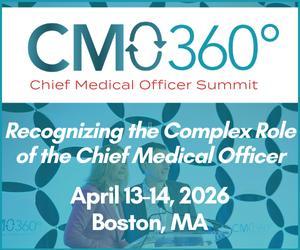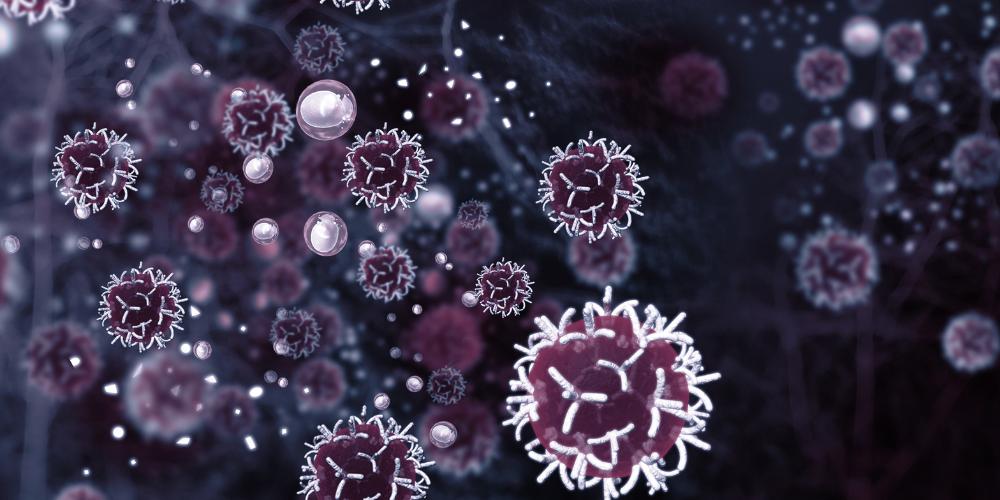
Can you describe the work you’re leading at Catamaran Bio?
We are creating off-the-shelf engineered allogeneic CAR-NK cell therapies for solid tumors. I lead the strategy to leverage our TAILWIND platform to create a pipeline of innovative CAR-NK cell therapy product candidates that possess novel functionalities.
We use synthetic biology tools and transposon systems to engineer our NK cell therapies with new attributes to help tackle solid tumors. The significance of the transposon system is that it enables us to introduce larger genetic payloads into the NK cells than what has been possible with the viral engineering methods being used in the field. With our approach, the sky’s the limit for what we can put into these NK cells, and this enables us to empower them against the tumor in a way that is beyond their inherent capabilities.
"NK cells are the first line of defense against tumors. They are wired to kill tumors and solicit other immune cell types to amplify tumor cell killing."
How are you changing the power of NK cells?
The great thing about transposon engineering is that it allows us to provide our CAR-NK cell therapies with multiple functionalities. We are directing them more specifically to the tumor with the chimeric antigen receptors, the CAR. We are also arming them with biological switches so that they resist the suppressive effects of the tumor microenvironment. And what’s even more exciting is that some of our switches outsmart the tumor by converting those inhibitory or suppressive signals from the tumor into NK cell stimulatory signals. We also engineer our CAR-NK cells with factors that help their longevity. The cell therapy field is teaching us that those durable responses are related to the longevity of the cells, so we want to improve their pharmacology to last longer thus possibly enable durable responses.
What does Catamaran hope to achieve by utilizing CAR-NK cells, versus CAR-T, to treat solid tumors?
NK cells are the first line of defense against tumors. They are wired to kill tumors and solicit other immune cell types to amplify tumor cell killing. They can also be engineered to improve their functionality in solid tumor environments.
A major advantage of CAR-NK cells over CAR-T cells is their improved safety profile. Allogeneic CAR-T cells carry the risk of GVHD, or graft versus host disease, where the T cells can start to attack the patient’s tissue, because they see it as foreign. NK cells don’t have that property. They are a safer way to deliver an allogeneic therapy. We are using our CAR-NK cell platform to develop allogeneic cell therapies to provide broader and immediate availability to patients.
"A major advantage of CAR-NK cells over CAR-T cells is their improved safety profile. Allogeneic CAR-T cells carry the risk of GVHD; NK cells don’t have that property."
Have NK cells been a large focus of your career?
My academic training was in cancer genetics, in other words, understanding what is going on in the tumor cells themselves. I started in the field of immuno-oncology during my industry career. Immuno-oncology comes in orthogonally, in that it’s not just about what’s going on in the tumor, but also about what’s happening in the whole body of the patient. I’m a lifelong learner; I love learning new things. It’s been great to enter this field through my work, as well as a lot of self-teaching and learning from conferences, to gain the appropriate background to be able to develop therapies in the IO space.
What can cell therapies achieve that is unique to their functionality?
Cell therapies can be considered as both a replacement for the patient’s immune system and as a catalyst for reawakening the immune system. They must change something in the tumor. The cell therapy itself can be therapeutic, but could also catalyze a change in the equilibrium that’s been established between tumor and the patient’s immune system. We have the potential with cell therapies to break that cycle and have the patient’s immune system come back and be functional against the tumor. We call that antigen spreading. That is a Holy Grail in the field: to be able to trigger a really transformative event against the tumor and shift things so that the patient’s immune system can come back and start recognizing that tumor as something that shouldn’t be there.
Your background is not in immuno-oncology originally. What has surprised you about the field since stepping into it?
I’ve been surprised by the patient responses to these therapies, and the durability of those responses for some patients. Early in my career, I chose to work in the CAR-T field because the clinical data was so promising in hematologic malignancy patients who had no other therapeutic options.
Is there a piece of advice that you often come back to over the course of your career?
No one is going to be great at everything. The most important thing is to have self-awareness of your limitations. Reach for the sky in your areas of strength and empower your team to complement your weaknesses.
What would be your advice for young women entering STEM careers?
I would say that you have an opportunity to learn the incredible way that nature works and an opportunity to discover or make something new. The most important thing is to stay connected to your curiosity, keep asking questions, and be motivated by what you learn.
A challenge for women is that it can be difficult to find female role models. And so, you need to be able to keep your confidence in yourself, and go back to that fundamental drive of wanting to understand something.
I have two daughters. The thing I try to support them with in their STEM work in school is not the content itself, but helping them to get past their self doubt when they find the work difficult. There’s no question, this is difficult work, and it requires dedication. But what I want to teach them is to see the difference between hard work, versus them not being capable, and reinforce to them that they can do it. They just have to work their way through the challenges.
"[With synthetic biology] We can now arm cell therapies with biological switches and functionalities to allow them to address solid tumors."
You’ve spoken before about synthetic biology and its role in cell therapy. Can you expand on that?
Historically in cell therapy we’ve been quite constrained, based on the engineering approaches available. Synthetic biology is changing all of that. We can now arm cell therapies with biological switches and functionalities to allow them to address solid tumors. We have the tool kit to make sure we direct them into the right place, that they’re functioning in the immunosuppressive tumor microenvironment, and that they have long lives for durable therapeutic responses.
And then we’d like to catalyze changes in the tumor and start impacting other cells that are present, turning dysfunctional cells into functional cells, and tap into what the patient’s cells can actually do for them. Ultimately, our goal is to reactivate the host immune system.
The ability to change the tumor suppressive environment and reactivate the host system: those are the frontier areas for synthetic biology.
You touched upon two areas – creating stronger and more durable cells and catalyzing the immune system. Can both goals be achieved in one therapy?
Until now, scientists haven’t been able to do that because of the limitation of the available engineering approaches. But the field is at a turning point now. And that is what’s so exciting to me about working at Catamaran. With the transposon engineering technology and synthetic biology, we can figure out what to put in the cells for new switches and pathways and the large cargo carrying capacity of transposons enables that engineering – the two technologies go hand-in-hand – you can’t do one without the other. We also have another gene editing approach for changing the cell and what it does. So I think the synergy of these technologies represent a turning point in this field. Combined, they are allowing us to open up what we can do, far beyond what’s been done in the past.
For more information on IO360º Summit, visit io360summit.com.









